Violinist Benjamin Baker explains the importance of not becoming fixated on the left hand and how focusing on the bow arm replenished his creative juices
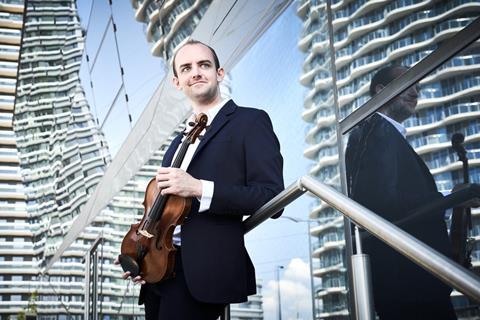
I have a vivid memory from a few years ago, something of a nightmare, of waking up one morning and feeling ambivalent towards the violin. I couldn’t answer the question, ‘what next?’ for my violin and me.
The previous day I had been knocked out of a big competition. I wasn’t too upset about it though and after weeks of intense preparation I felt in fantastic shape and on top of the world. However, even though there were still plenty of stimulating things in my diary, the thought of putting the violin up to my chin was dull and uninspiring. My relationship with the violin felt stagnant.
Read: Violinist Benjamin Baker and double bassist Xavier Foley named 2016 Young Concert Artists
Read: New Zealand violinist Benjamin Baker, 23, takes £5,000 first prize in Windsor
Luckily for me, I immediately had a few opportunities in the following weeks and months where I could go looking for answers. One of these opportunities was the inaugural East Neuk Festival Retreat, where I am writing this from now.
With the help of some wonderful mentors over the next few months and years, I came to the realisation that I was living a left-hand dominated musical existence. I paid plenty of attention to the quality of sound I produced, but my left hand was leading my playing, stealing much of my focus, and this also contributed to a feeling of autopilot sometimes when I was performing.
It felt like the creative juices were beginning to flow again as I came to understand that; while the left hand is something one must develop early in life and is of course critical in our ability to perform on a string instrument, its creative possibilities are somewhat limited. By comparison, the possibilities for our bow arm and how it interacts with the instrument, are probably endless!
Beginning this transition meant taking a leap of faith; to trust that my left hand knew what it was doing and didn’t need my constant attention. Attempting to be more specific with how my bow approached the string and learning what part the rest of my body played in this process felt like opening a can of worms, but at the same time was incredibly exciting as little by little I was discovering more colours, inflections, articulations and sound worlds.
I suddenly felt much more connected to the sound I was producing and much more involved in every part of the process. The right-hand autopilot was fully ‘off’.
As string players we are incredibly lucky, we have the ability to change colour and inflection through any note or group of notes, and deciding where and how to do this can transform how we communicate a piece of music to our listeners.
Looking at the next few days at the East Neuk Festival, there is an exciting selection of repertoire on the menu of which I’m relishing the creative and physical challenges.
The achingly beautiful simplicity of Arvo Pärt’s Spiegel im Spiegel is perhaps the purest challenge of connecting technique with musical intention. When presented with the limitless vistas of Pärt’s phrases and texture, it puts a new focus on the beginning, middle and end of each note. Each new start is one step further away from ‘home’ and every note needs to be in perfect balance with the intention of the phrase as a whole. It can feel like a tightrope to keep each note glowing in its own natural beauty, and once that note is finished, one is faced with the stress of changing to the next note, a new direction of bow, and a new finger! A potential performance anxiety nightmare!
Bach’s Sonatas and Partitas by comparison present a very different challenge. In these works I feel like Bach has laid out the blueprint for a small solar system on the page for us. It is our challenge to unlock this potential and create an aural world that is far bigger than ourselves and a single violin, for our listeners ears to go exploring in if they wish.
Through every phrase we play there is a harmonic grounding that is sometimes in what we play, or a separate unwritten voice. I try to always keep my ear focused on this voice as sometimes I have the opportunity to lead it, and sometimes it leads me.
Unlike many composers before him, Bach writes out his own beautiful ornamentations and often leaves it to our ears to connect the dots and follow the harmonic narrative. By keeping my inner-ear on this voice it stops me getting lost in the beauty of the ornamentations for their own sake, and keeps me connected to the evolution of the movement as a whole.
So to wrap up, here I am in East Neuk feeling like one of the luckiest musicians to be performing again in these beautiful surroundings, and feeling even luckier to be able to look forward to get up tomorrow morning and lift the violin to my chin to continue exploring. Most of all, I’m looking forward to that day, hopefully not too far in the future, where we can share incredible music while surrounded by the beauty of our natural world in person again soon!
Benjamin Baker performs at the East Neuk Festival in Scotland this weekend. A filmed performance of Benjamin performing Bach on location in Fife will also be released at www.eastneukfestival.com.
Topics
Technique: Left-hand calisthenics
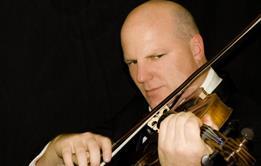
Quick warm-ups to help you improve strength, endurance, flexibilty and control
- 1
- 2
- 3
- 4
- 5
- 6
- 7
 Currently
reading
Currently
reading
I was living a left-hand dominated musical existence - Benjamin Baker
- 9
- 10
- 11
- 12
- 13
- 14
- 15


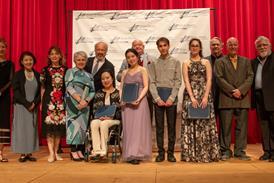
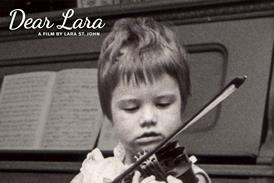
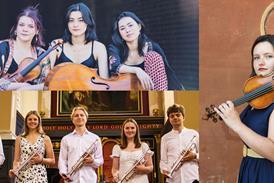



































































No comments yet